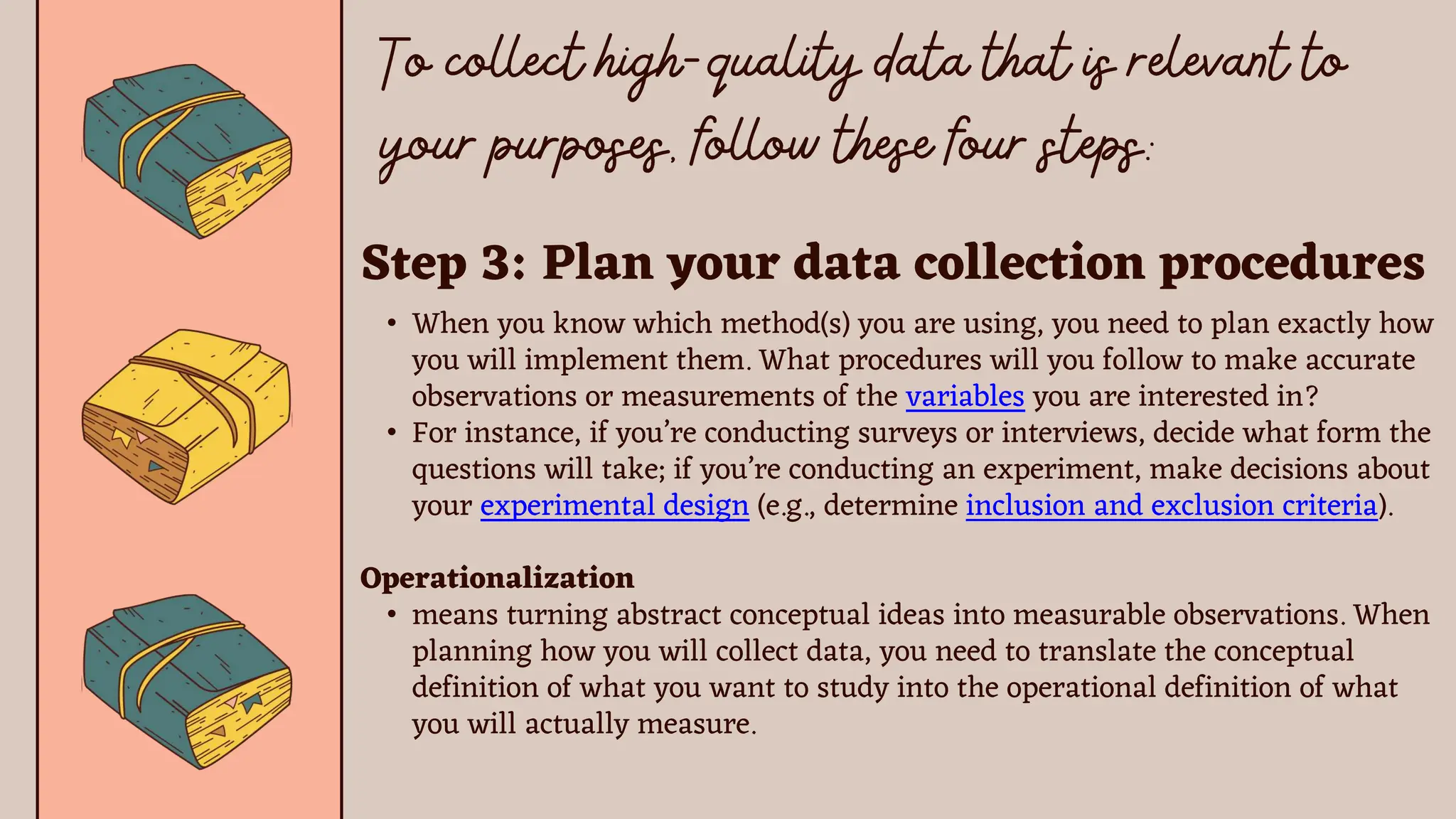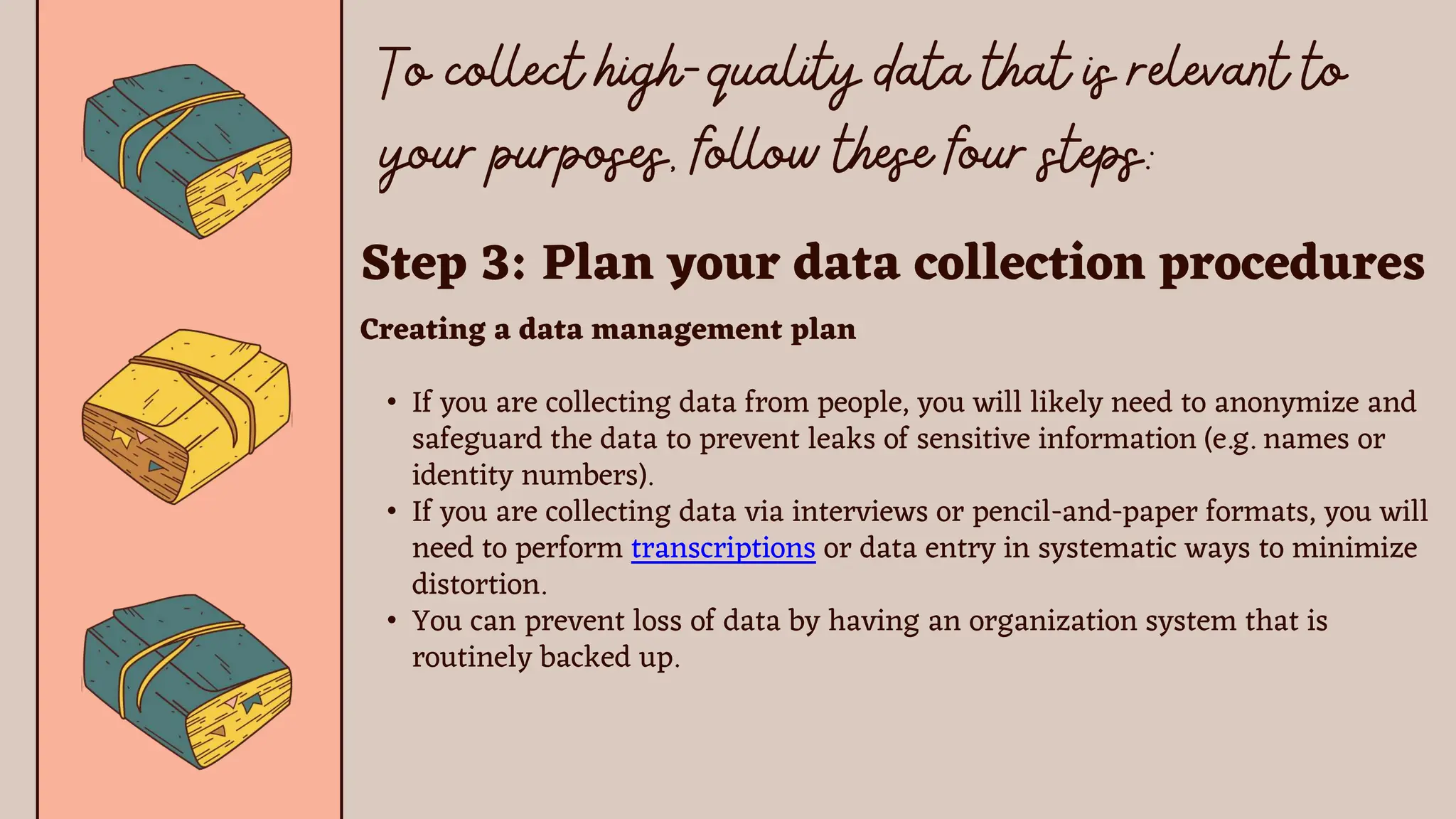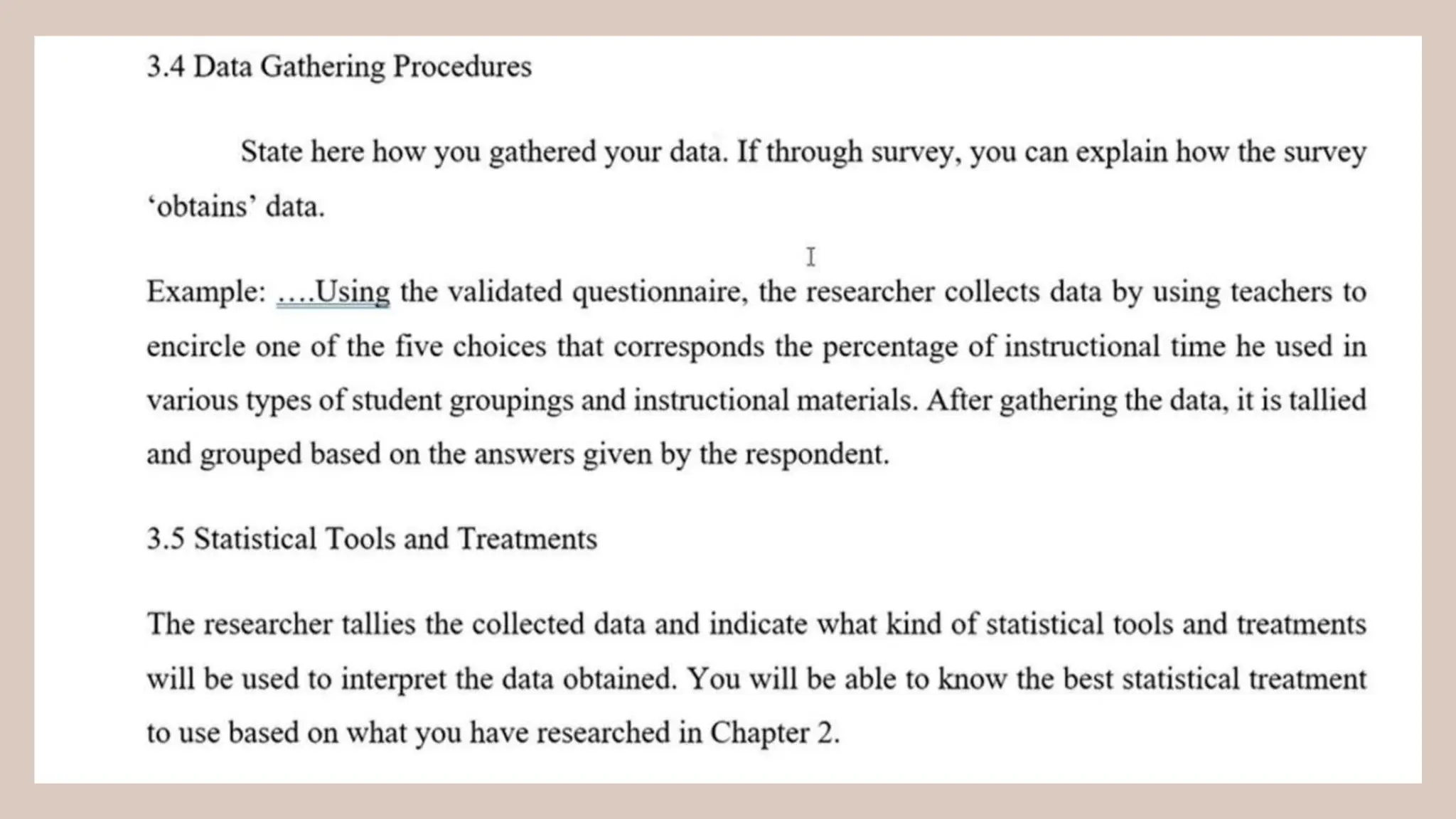The document discusses the process of data collection in research. It explains that data collection involves systematically gathering observations or measurements to gain insights into a research problem. It then outlines the key steps in data collection: 1) Define the research aim and questions, 2) Choose an appropriate data collection method like surveys, experiments or interviews, 3) Plan the specific data collection procedures by operationalizing concepts, determining sampling methods, and standardizing procedures, and 4) Implement the chosen methods to collect the data. Qualitative and quantitative examples are provided to illustrate mixed methods approaches.













